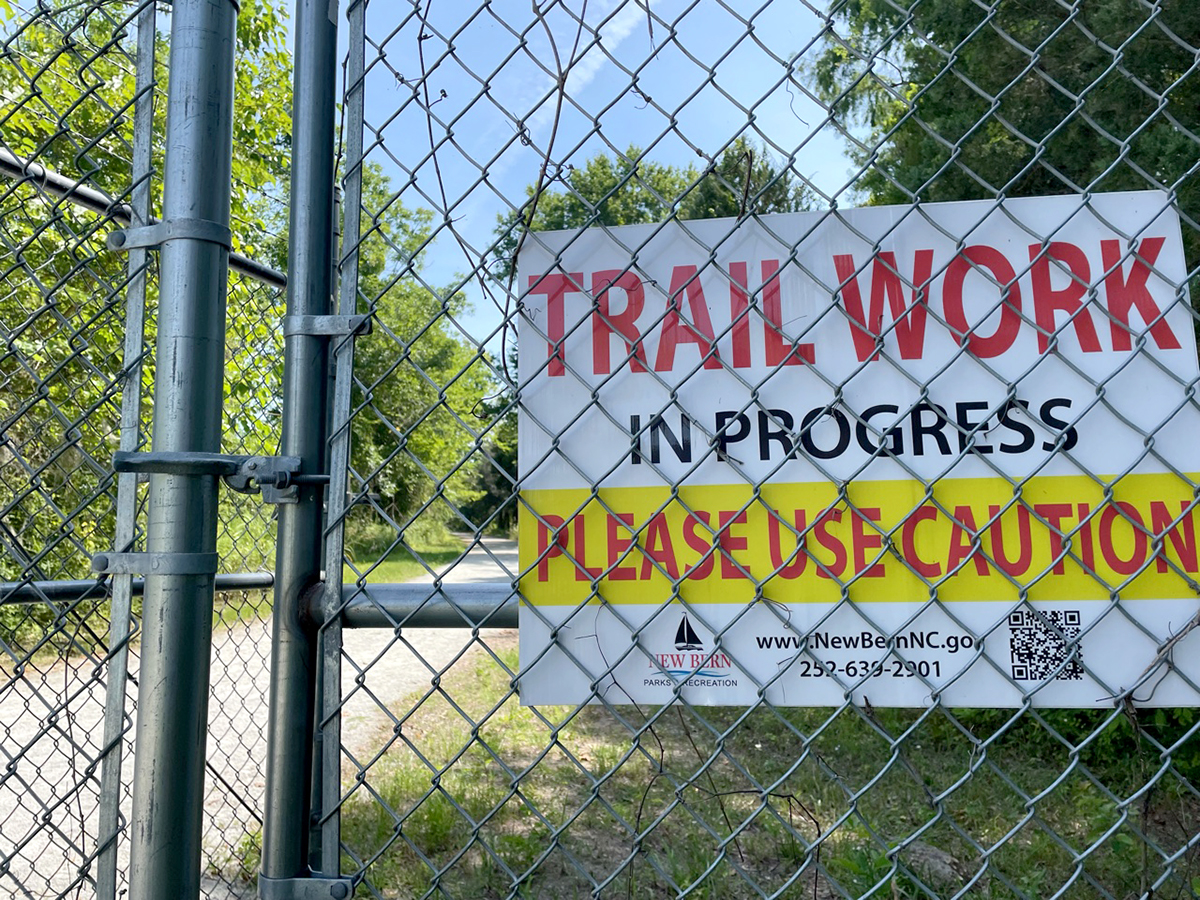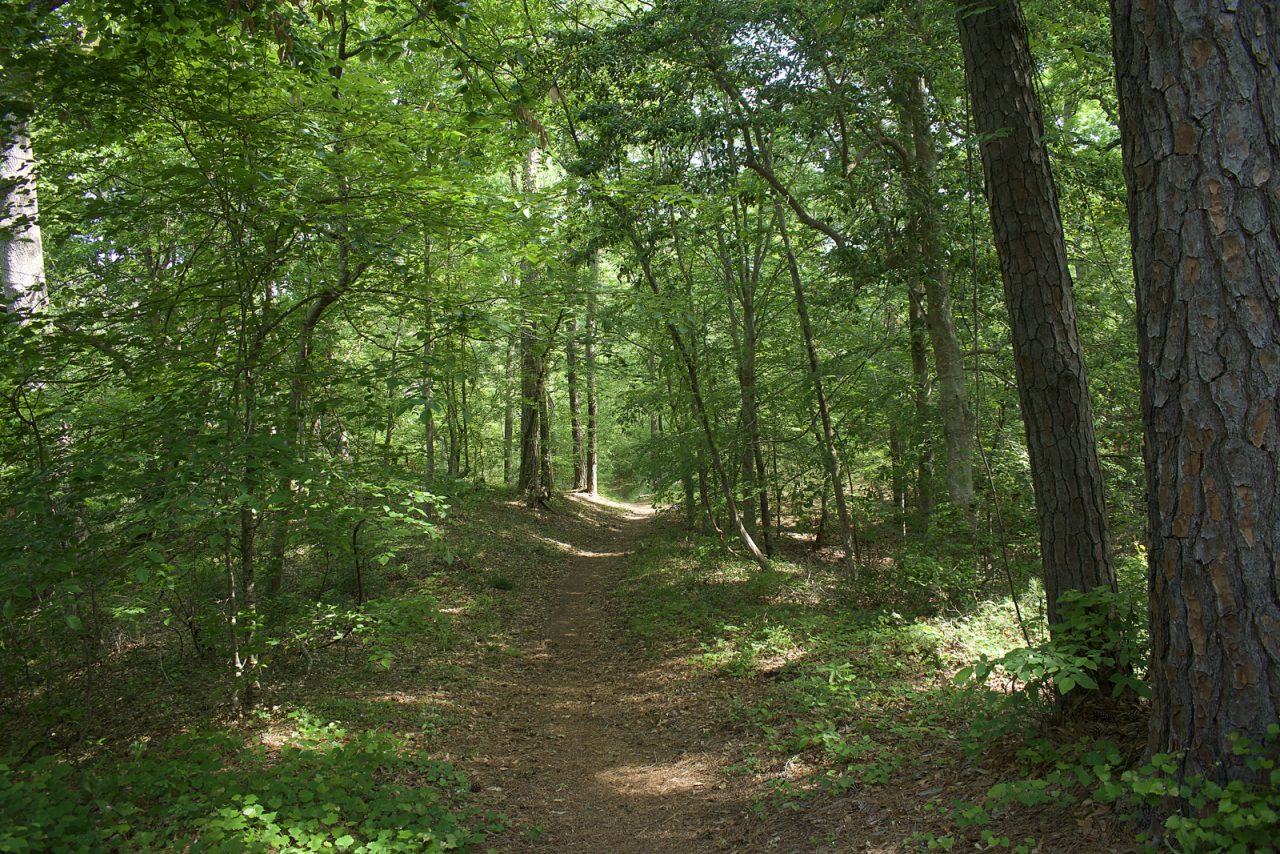
More North Carolinians than ever are turning to outdoor recreation as a safe and healthy way to spend time with friends and family.
As the number of visitors increases on the state’s trail system, the trails may require more maintenance, a problem compounded by the effects of more frequent extreme weather.
Supporter Spotlight
North Carolina State Parks reported 19.8 million visitors to its parks and recreation areas in 2020, 2 million more than in 2019, an increase likely associated with the COVID-19 pandemic.
In 2021, visitation grew even more with parks reporting 22.8 million visitors, 3 million more than any previous year on record.
Coastal region trails specialist for the North Carolina Trails Program Bob Taber explained how trails have become popular since COVID-19.
“Whether we’re talking about county parks, state parks, or federal parks, we are seeing a huge influx of people getting out and enjoying trails,” he said. “And they took a huge hit as far as maintenance.”
COVID-19 is not the only factor influencing the management of North Carolina trail systems. Taber told Coastal Review, “A higher frequency of flooding and drought conditions will play a paramount role in trail maintenance.”
Supporter Spotlight
He explained that more extreme weather can cause issues such as trail tread erosion and washed-out boardwalks.
“Changing times means our trail designs need to adapt,” said Taber.
Development director of the North Carolina Conservation Corps Jan Pender said more trails will require intervention and attention as the frequency and severity of storms increases.
“You have so many more places where they’re getting washed out and need more severe intervention,” she said.
Trail design and maintenance
The 2021-22 state budget added $91 million for state and local parks along with trails and beach access. An additional $29 million was allocated for state trails projects.
The Conservation Corps North Carolina partners with the North Carolina Division of Parks and Recreation and other land managers to create sustainable trail systems, while also engaging young people in conservation service projects.
Not only are organizations focused on building new trails, but also maintaining and redesigning old trails. Taber said that state parks are “essentially trying to better design some of our old trails to be more sustainable.”
When designing and managing a trail, many factors are considered, but Taber and Pender expressed the importance of water.
“The main problem with any trail is water. You’re trying to get runoff off the trail as quick as possible and trying to prevent it flowing down the trail tread. So, it’s all in the design,” said Taber.
“One of the big stressors is a lot of these trails are old and were not sustainably laid out,” said Pender. “If they weren’t laid out to be sustainable, you’re just fighting gravity and water erosion all the time.”
Northern NC Reserve trails
Erik Alnes, the Northern Sites manager for the North Carolina Coastal Reserve & National Estuarine Research Reserve, said that location is the first consideration when building trails in Currituck Banks, Kitty Hawk Woods or Buxton Woods.
In an email response, Alnes explained, “This includes looking at the project area to avoid sensitive soils, plan trail paths on higher ground to avoid sensitive wetland areas, avoid steep slopes and highly erodible soils, and avoid areas where there are rare species and communities.”
“The wetland areas of the northern reserves are very fragile, and we have several rare species and communities that have been found on our sites. This includes globally rare maritime forest community types, as well as state and federally threatened plants,” Alnes continued.

Once the trail is constructed, Alnes explained that best management practices are utilized such as maintaining vegetation on the edge of trails along with keeping a layer of organic material on the trail beds to control erosion.
There are more than 25 miles of trail to be maintained at the Northern Sites, and Alnes added “Our trained volunteers are a huge help to keeping trails trimmed back.”
Reserve officials hope to perform a trail-use study in the fall for Kitty Hawk Woods that will likely be replicated in Currituck Banks and Buxton Woods. This type of study will help officials better understand trail usage in their areas and to improve future trail design and maintenance.
Visiting Trails
Whether hiking, biking, running, or horseback riding, eastern North Carolina trails have a lot to offer visitors throughout the year. There are 41 state parks in North Carolina with more than 580 miles of trails.
“We ask visitors to stay on the trails, use designated access points, and respect other users,” said Alnes.
“The increased traffic is a problem to the ecosystem that these trails are in because what happens is they erode, and people make social trails around them. Then they start trampling on fragile vegetation,” Pender said. “If a trail isn’t working for you, try not to go around that trail, but to stay on the trail. Because that’s where the ecosystem becomes threatened — people walking around that trail and creating trails in areas that are fragile.”
To learn more about what eastern North Carolina trails have to offer, visit NC State Parks or the NC Coastal Reserve sites.







